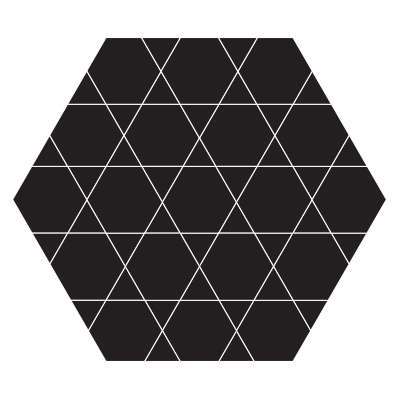Dancing Shapes II
Imagine the same scenario as in
previous problem
, but now the dance floor is marked with a hexagon, as shown. The internal cells may be hexagons or triangles, but the rules of the dance are exactly the same as before: Dance in your cell until you hear the drumbeat, at which time you cross over a line into an adjacent cell.
 Again, what is the minimum number of dancers for whom the club will have to spring for drinks at the end of the song, if the dancers follow the instructions correctly? Can you find a general formula for any hexagon having
internal lines parallel to each side? (The figure shown has four.)
Again, what is the minimum number of dancers for whom the club will have to spring for drinks at the end of the song, if the dancers follow the instructions correctly? Can you find a general formula for any hexagon having
internal lines parallel to each side? (The figure shown has four.)
This section requires Javascript.
You are seeing this because something didn't load right. We suggest you, (a) try
refreshing the page, (b) enabling javascript if it is disabled on your browser and,
finally, (c)
loading the
non-javascript version of this page
. We're sorry about the hassle.
When there are k internal lines ( k must be even), denote m = k / 2 ; there are 6 m ( m + 1 ) triangles and 3 m ( m + 1 ) + 1 hexagons. The minimum number of empty cells is 3 m ( m + 1 ) − 1 .